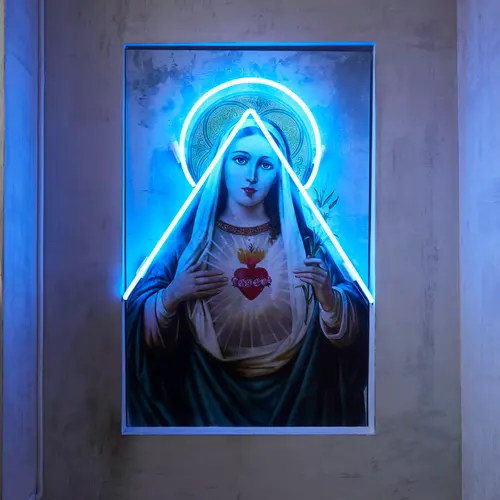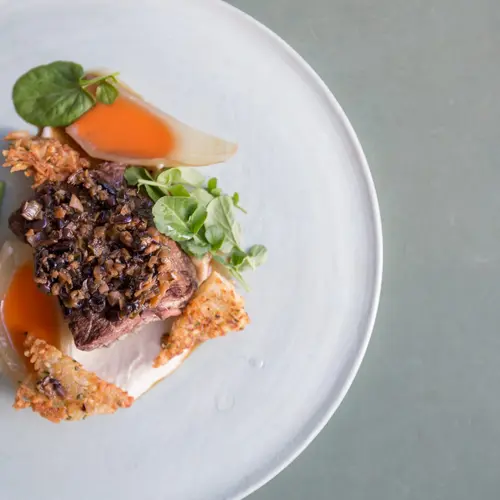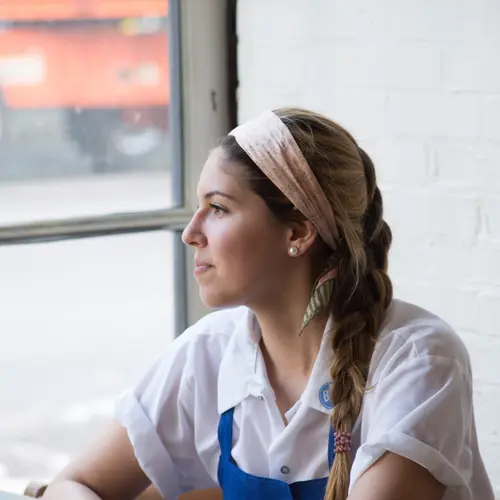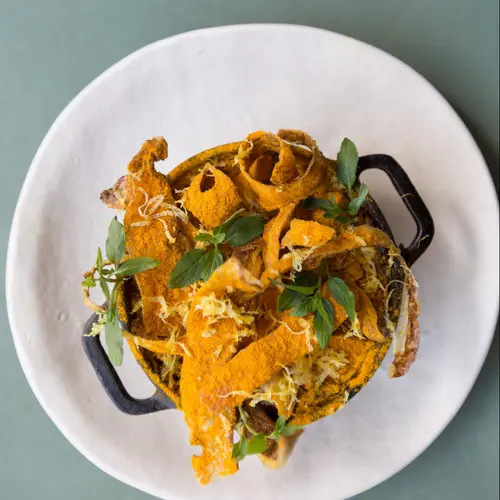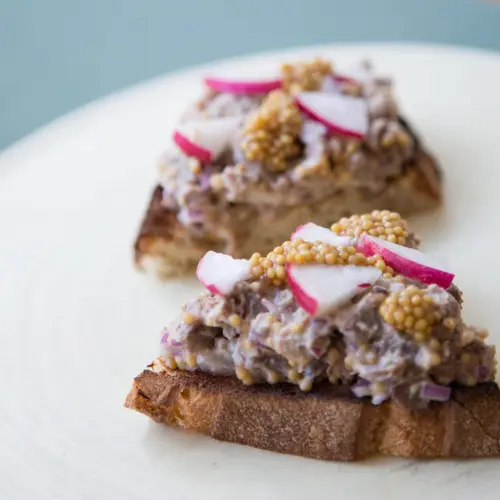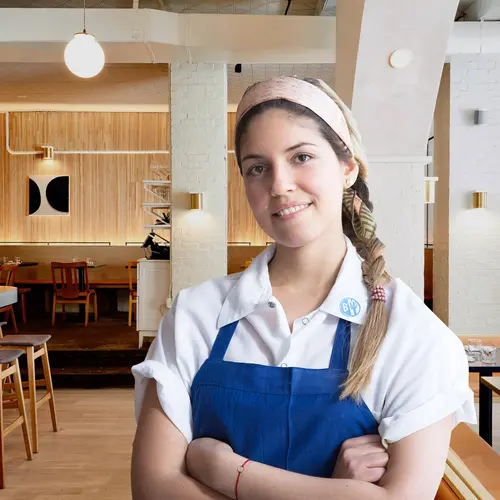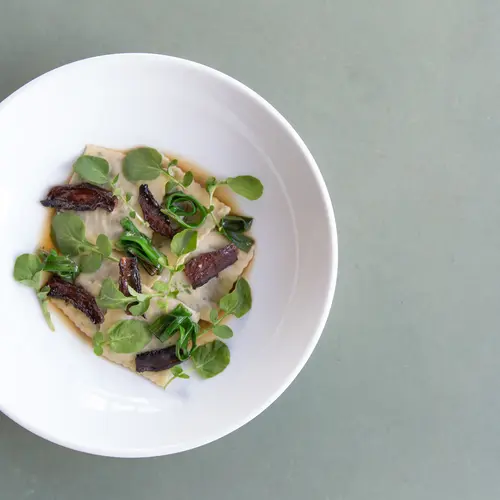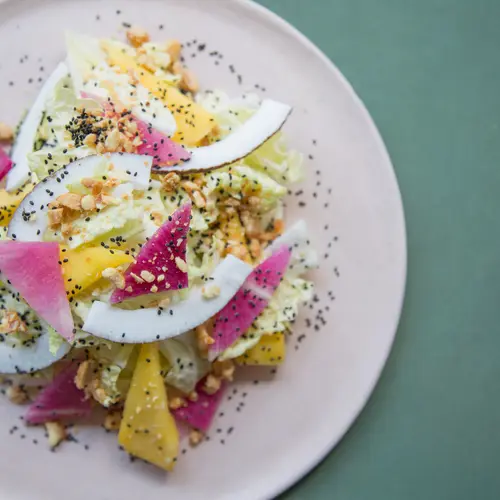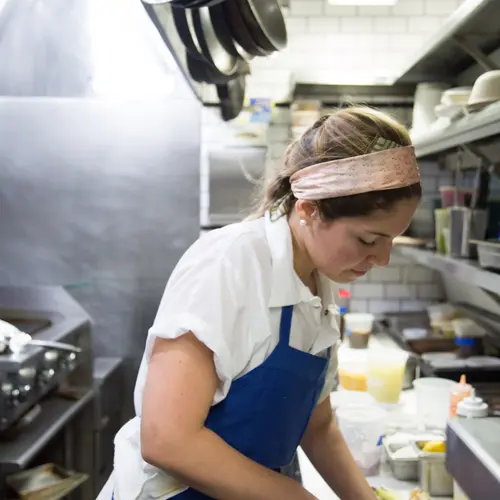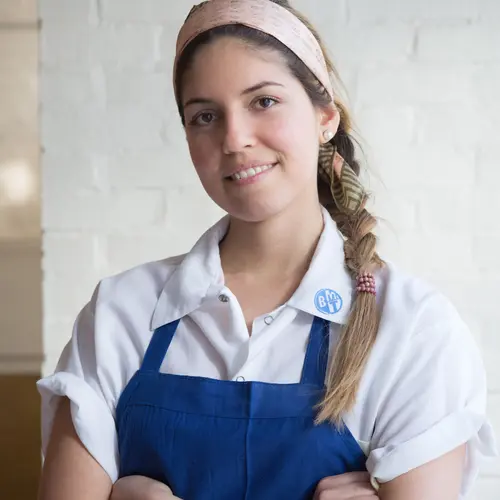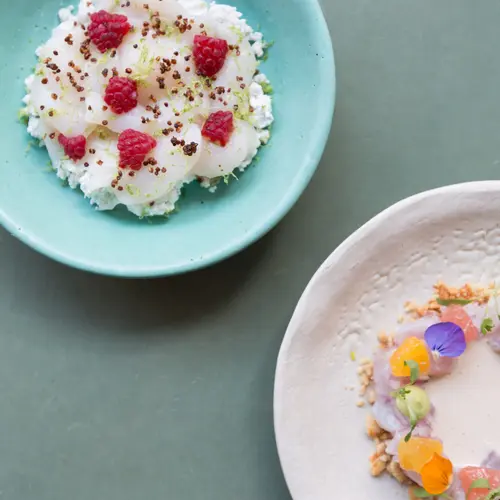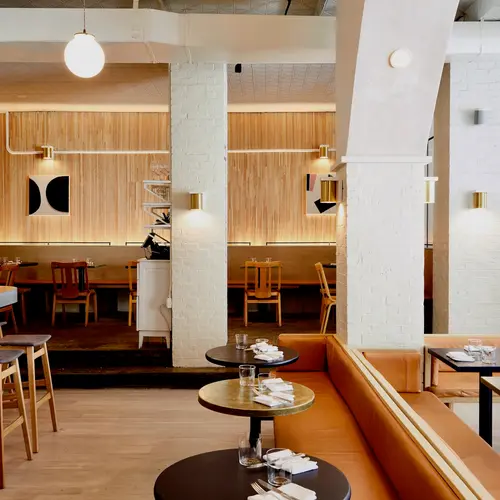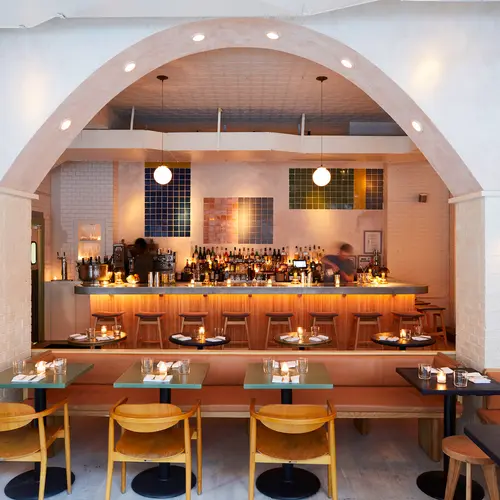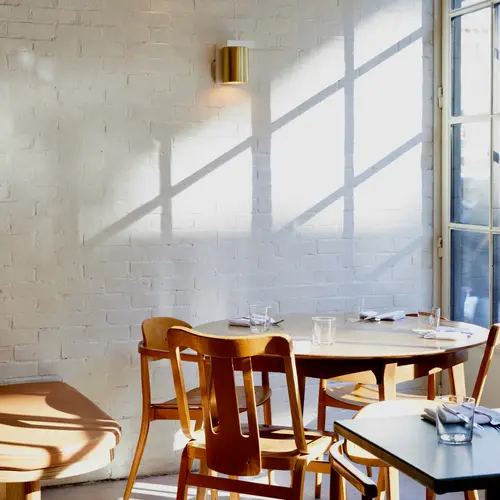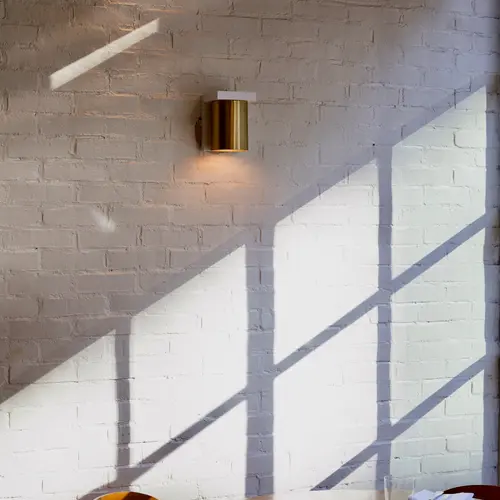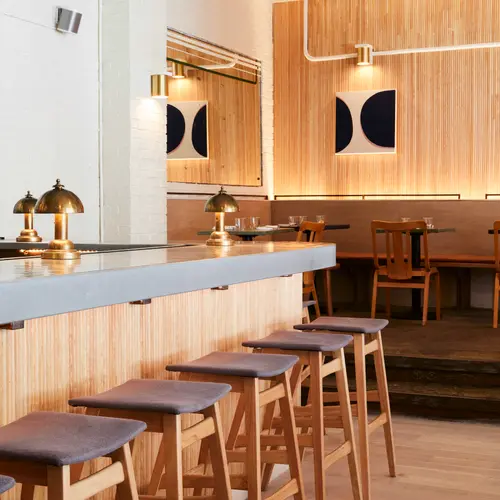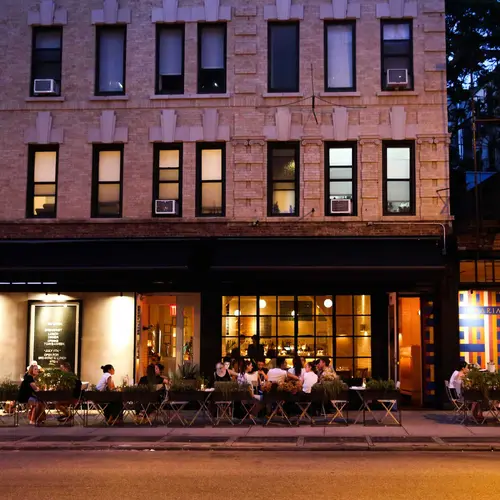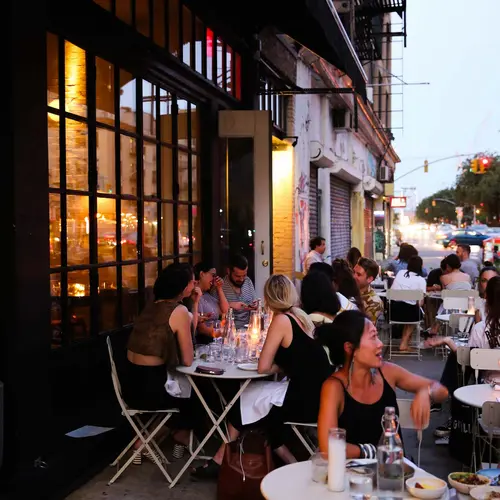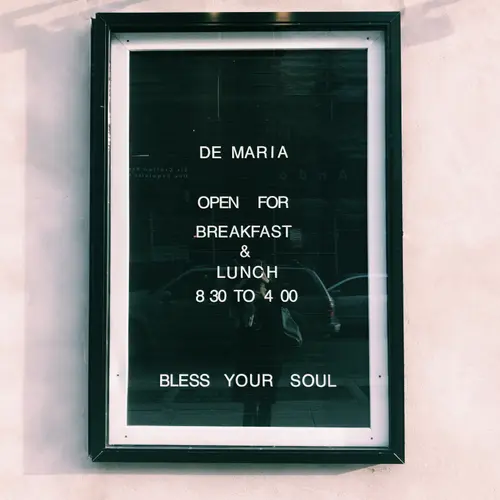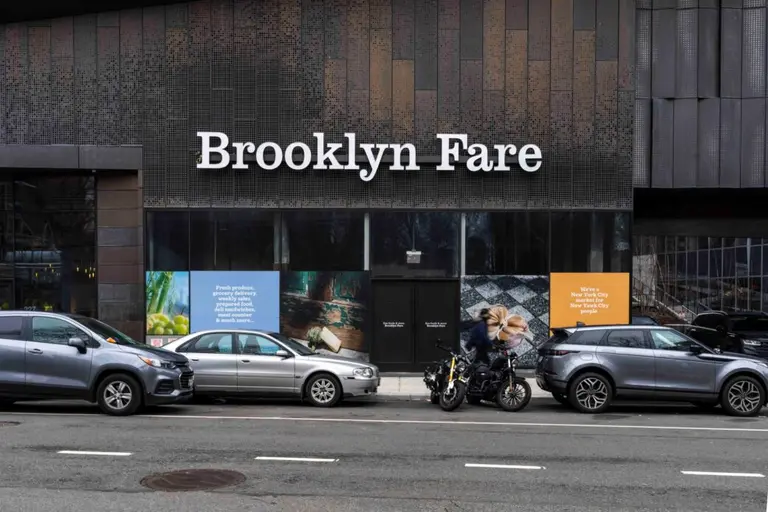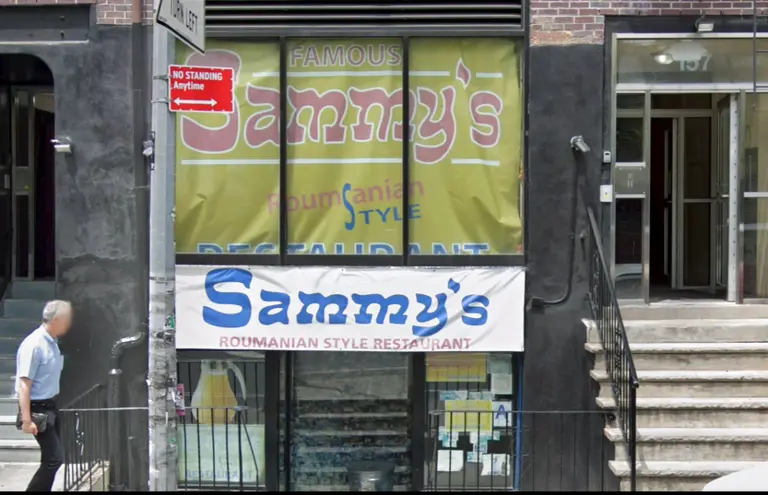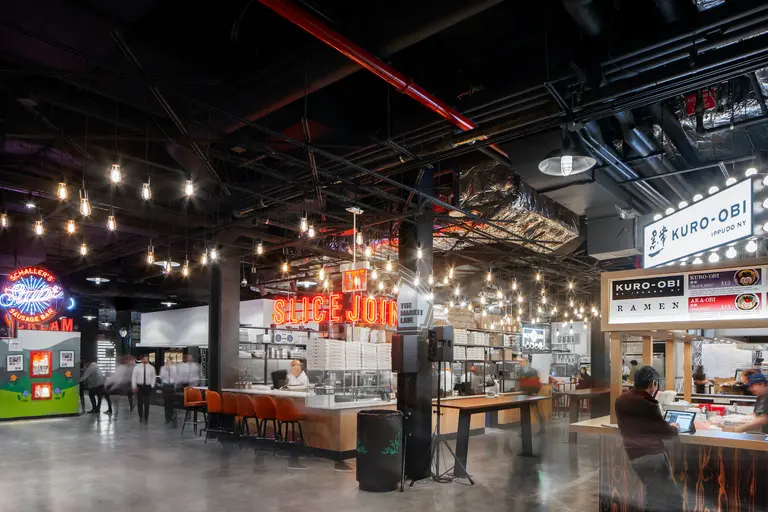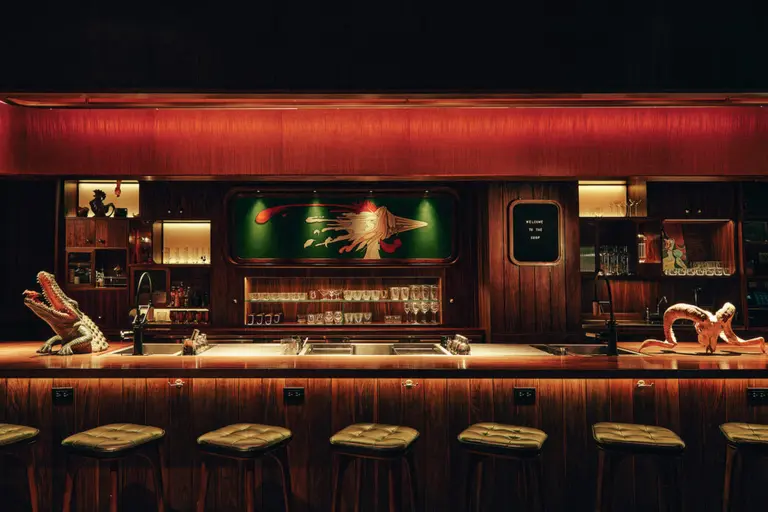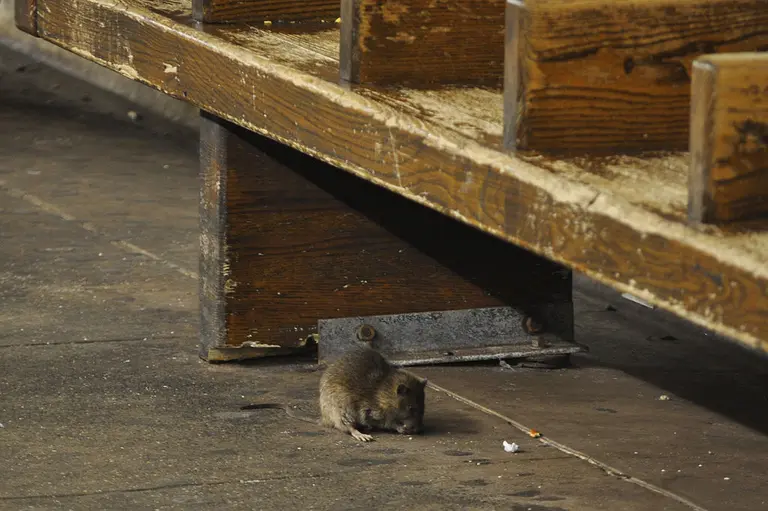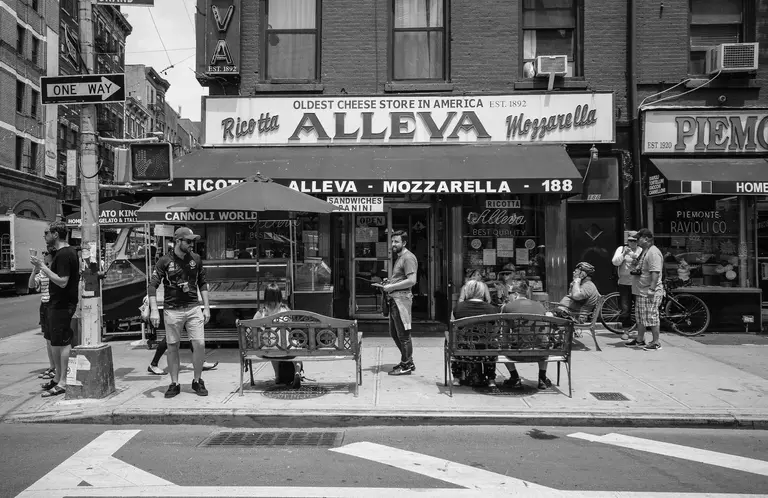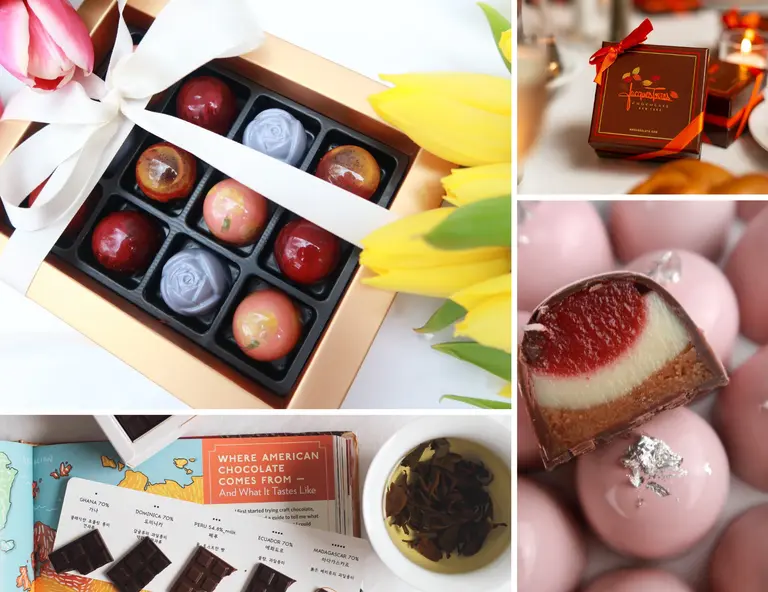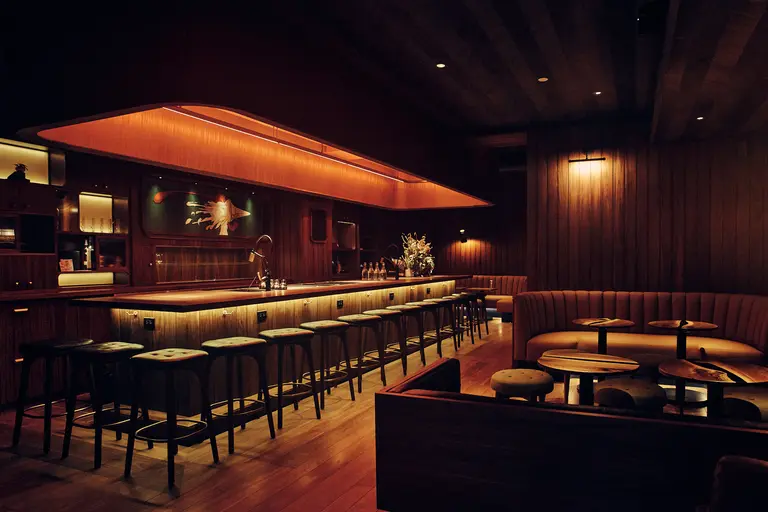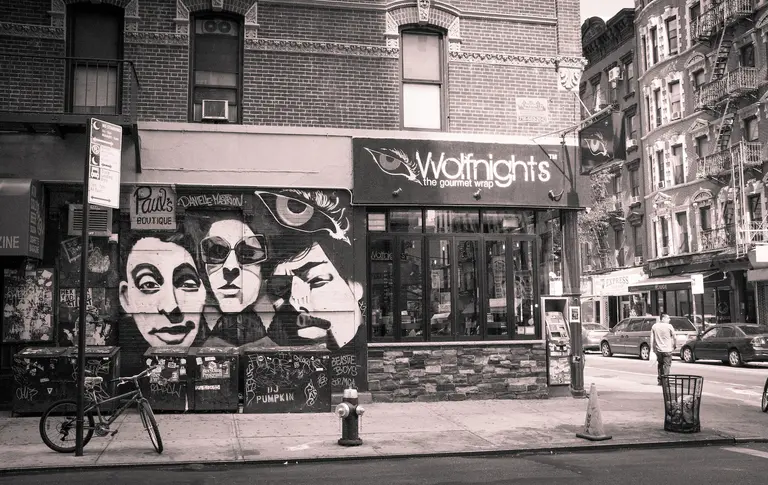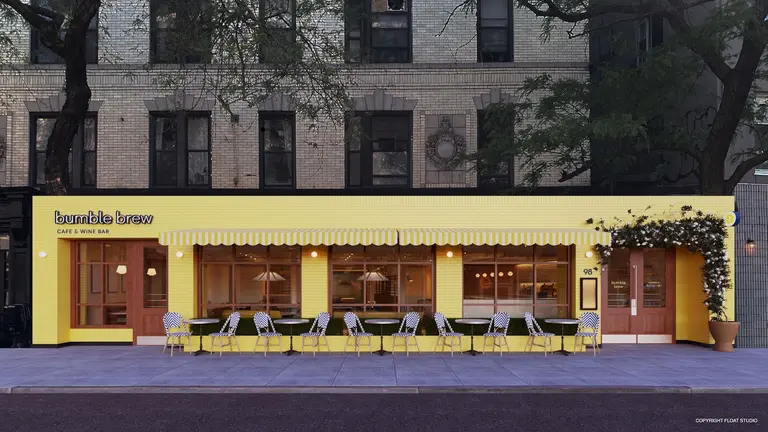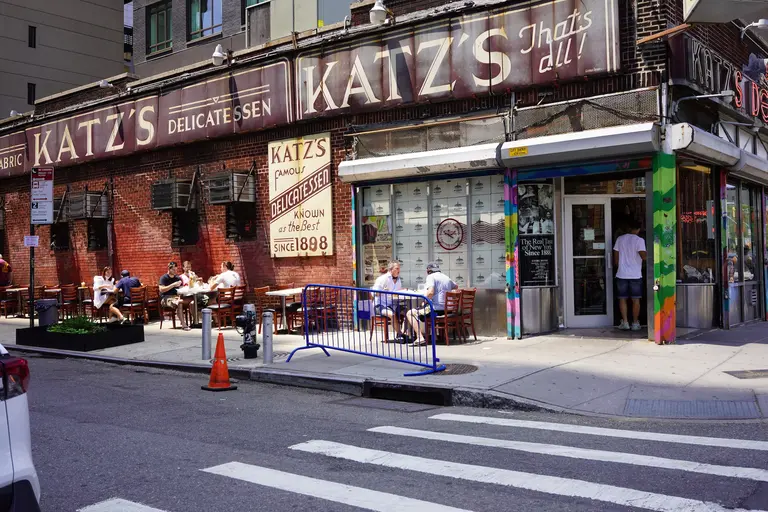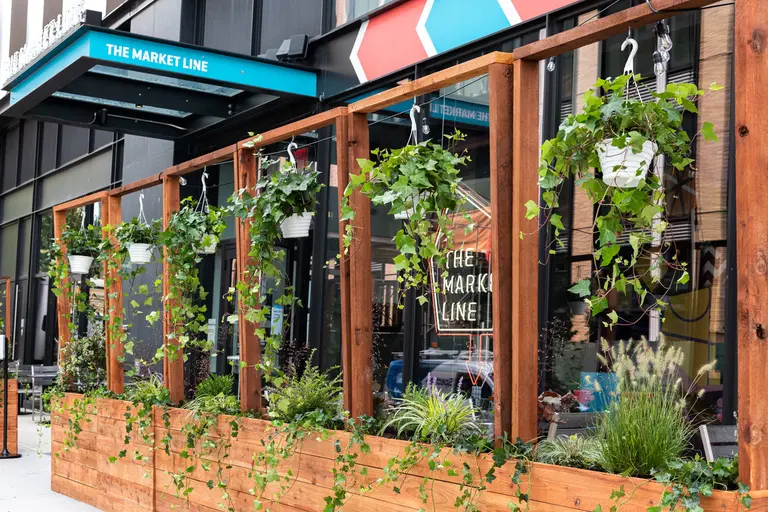Adriana Urbina brings Venezuelan flavors to Nolita’s De Maria while empowering female chefs
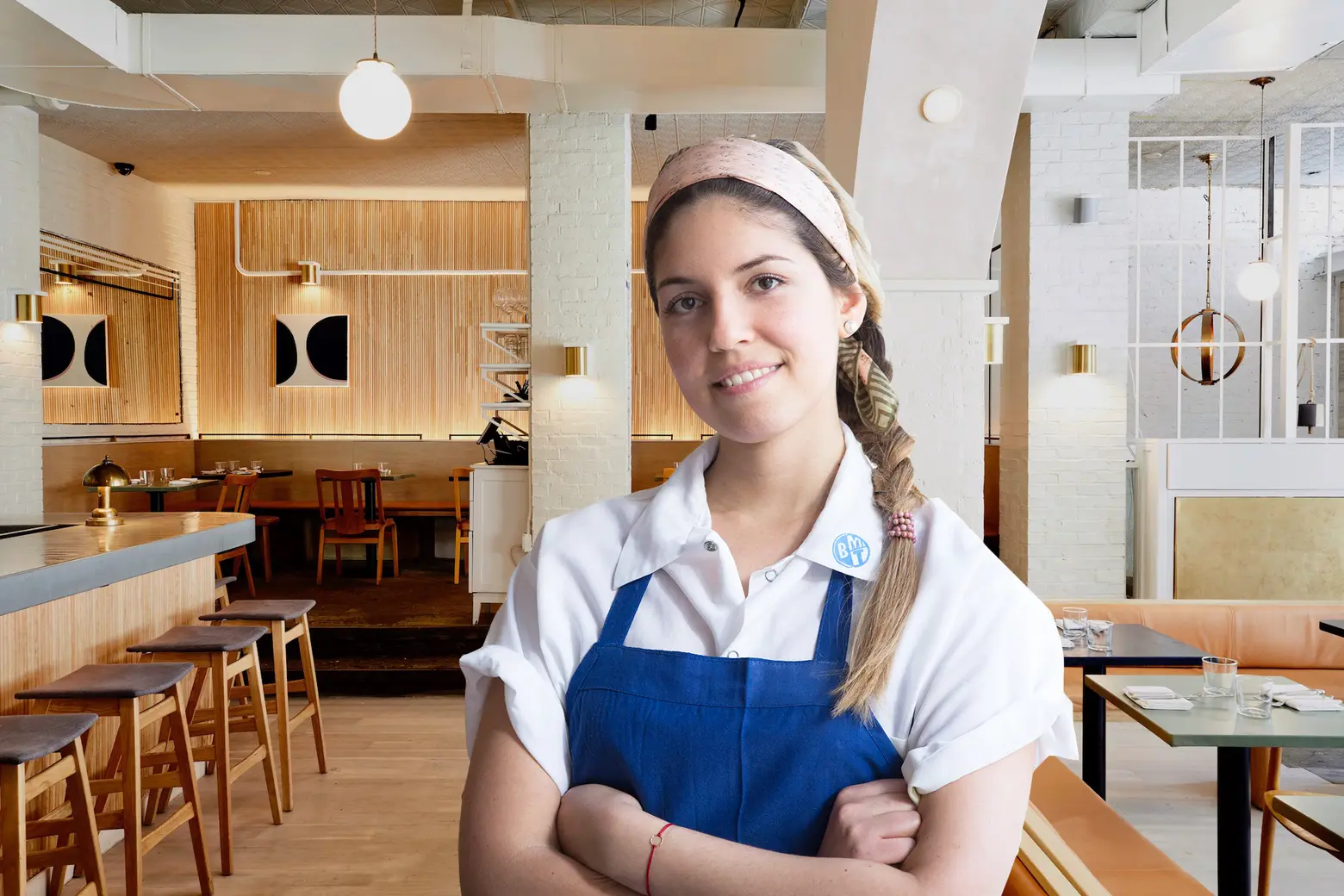
Restuarant photo credit: Nicole Franzen; Portrait credit: Kathryn Sheldon
Earlier this month, Nolita restaurant De Maria won the coveted James Beard Award for best restaurant design or renovation in North America. The designers at The MP Shift replicated an artist’s studio, with Soho in the ‘70s and the Bauhaus movement in mind. But it’s not just the space that’s beautiful; Venezuelan-born chef Adriana Urbina‘s dishes, composed heavily of veggies and seafood, look like they were made for Instagram.
Outside of the visuals, however, what sets De Maria apart is Urbina’s socially conscious approach. Not only does she mix her South American heritage with her fine dining background (she started her career as an apprentice at Michelin 3-star restaurant in Spain, Martín Berasategui and was a 2017 winner of Food Network’s “Chopped”), but she’s committed to empowering female chefs and business owners, as well as using food as a way to connect people and raise awareness about what’s going on in the world. 6sqft recently enjoyed an insanely delicious meal at De Maria and chatted with Adriana about her journey, the restaurant scene in NYC, and why this Nolita restaurant is the perfect place to see out her dreams.
 Credit: Kathryn Sheldon
Credit: Kathryn Sheldon
How did you get into cooking?
I started cooking when I was very little because my parents loved to cook, so I was always around food and loved to eat. My dad is a painter, and my sister is a graphic designer. All of her friends are artists, so that was another creative outlet for us, as a family.
When I was 15, before studying, I started working in a professional restaurant. I loved it, so I saved some money and I went to culinary school in my country. And then I saved more money and went to Spain. I studied for a while in Alain Ducasse, also with the money I saved. Spain was such an amazing experience for me because I feel like I learned all my basics there.
And what ultimately brought you to New York?
My plan was to travel around the world and explore, then go back to my country, but things got very, very dangerous. So, I decided to come to New York because my sister was living here. I started researching and found all these amazing restaurants. My first job was at Rouge Tomate. It was a one-Michelin star restaurant; it was very healthy, fine dining that was something very new for me.
I learned a lot about how to utilize seasonal ingredients in an elevated way. Because I came from Paris and Spain, where they use a ton of butter (which is delicious and I love!), this was a new experience. Then I worked at Atera and a bunch of other restaurants.
What did all of this fine dining experience teach you about yourself as a chef?
It always seemed that the most important thing for me was my roots and my heritage, that is Venezuelan. Everything that I cooked, it was inspired by Venezuela and the flavors I grew up with. I’m so proud of who I am and where I come from, and it’s very important for me to show that. But I also have huge influences from all the places I’ve worked and lived. And of course, New York. So, it’s a combination of all these things and my heritage.

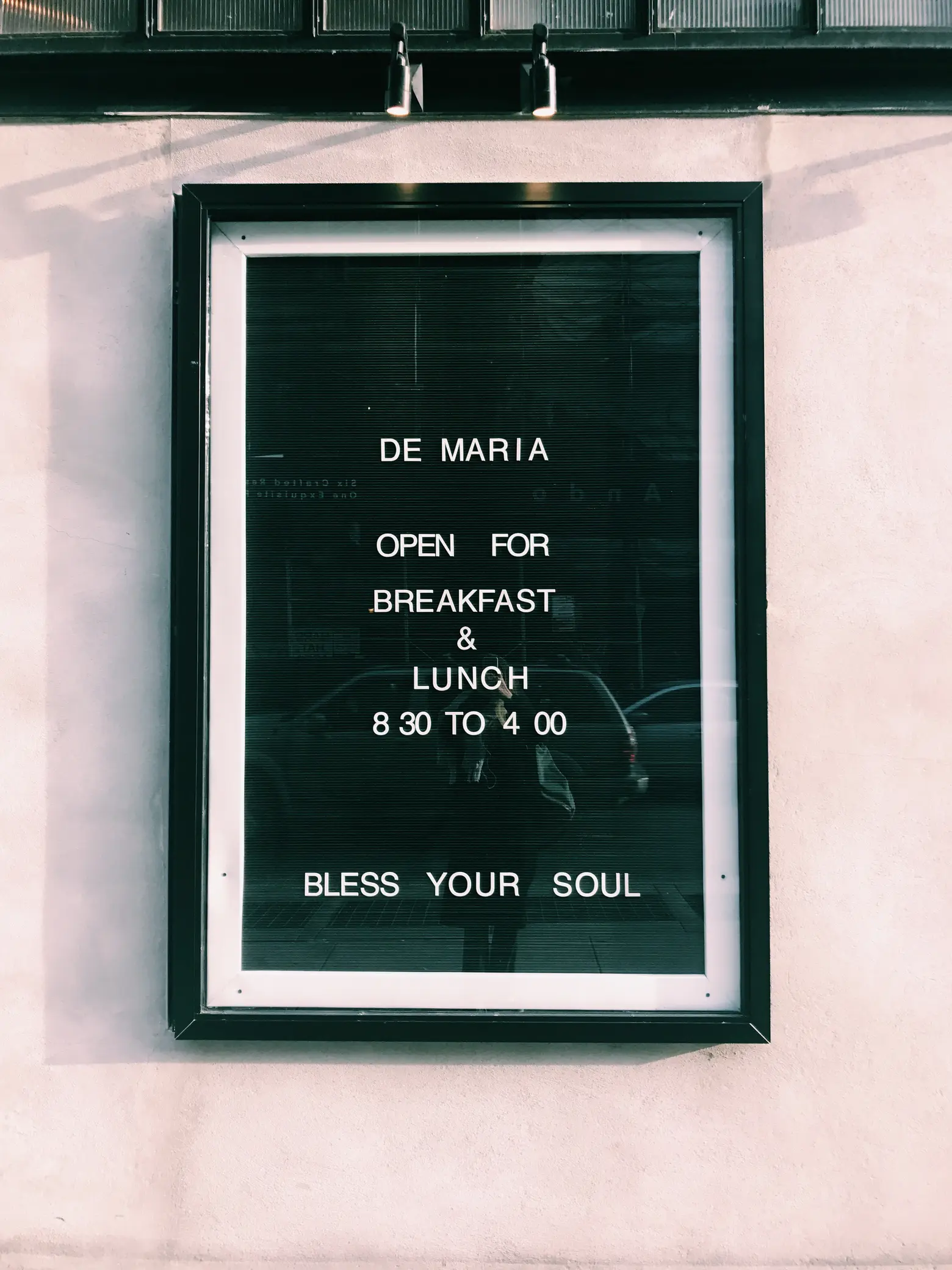 Top: Credit Katie June Burton; Bottom: Credit Nikki Brand
Top: Credit Katie June Burton; Bottom: Credit Nikki Brand
How did you get involved with De Maria?
Five years ago, I started doing pop-up dinners inspired by Venezuelan flavors. Through a friend, [De Maria’s co-owner and creative director Grace Lee and the original culinary director and executive chef Camille Becerra] started coming to my pop-ups and loved my food. After Camille left the restaurant, they were looking for chefs and they thought about me.
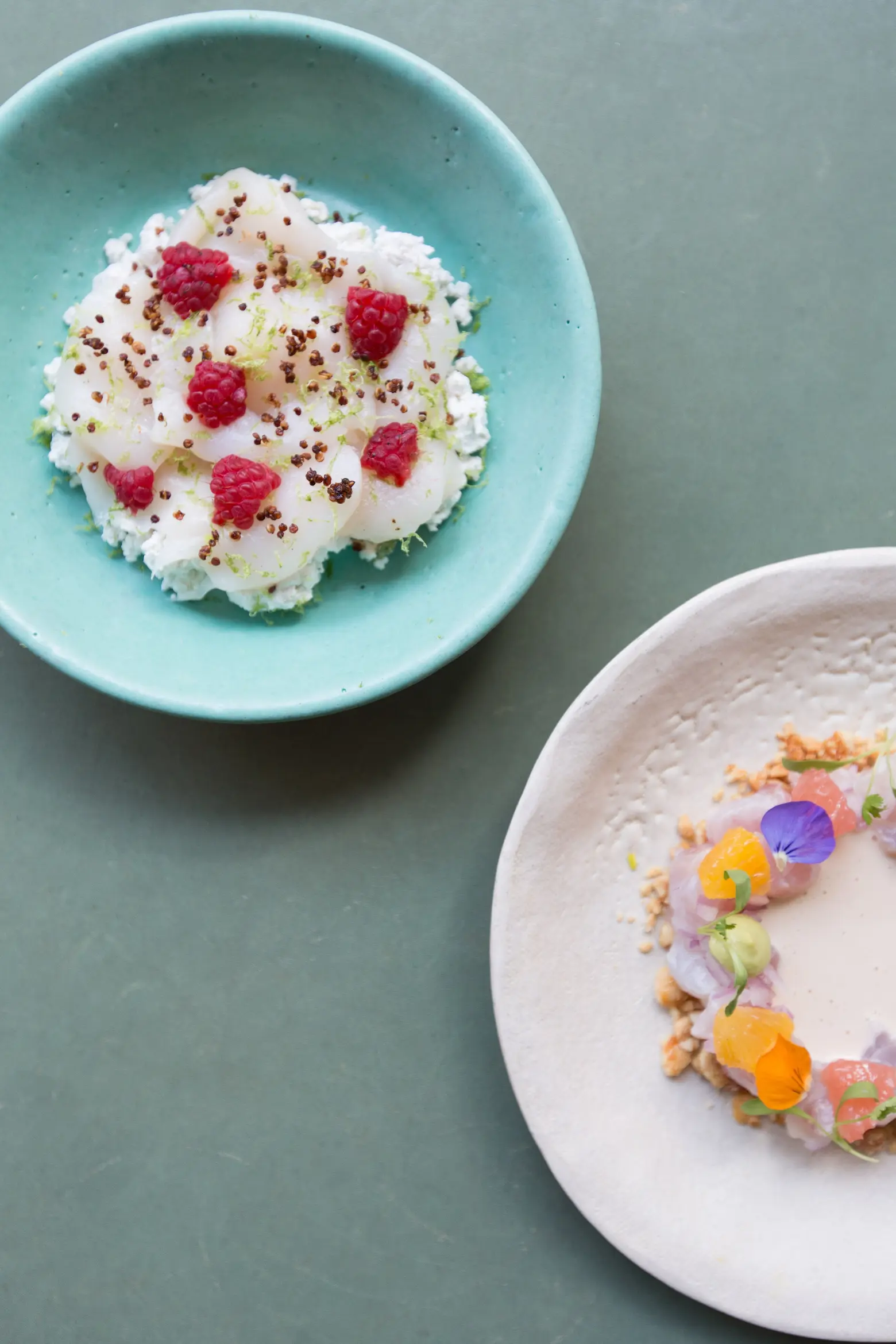 Scallop Crudo (left) and Snapper Ceviche (right). Credit: Kathryn Sheldon
Scallop Crudo (left) and Snapper Ceviche (right). Credit: Kathryn Sheldon
And how did you go about creating the menu there?
We wanted to keep a seasonal and very fresh vibe of the menu. I highly respect Camille. I have been following her work, and I think she’s an amazing chef. I wanted to do a slow transition between her dishes and my dishes, but also add my touch, keeping it fresh and light, but also highlighting the Latin flavors. I left a lot of fresh salads and veggies.
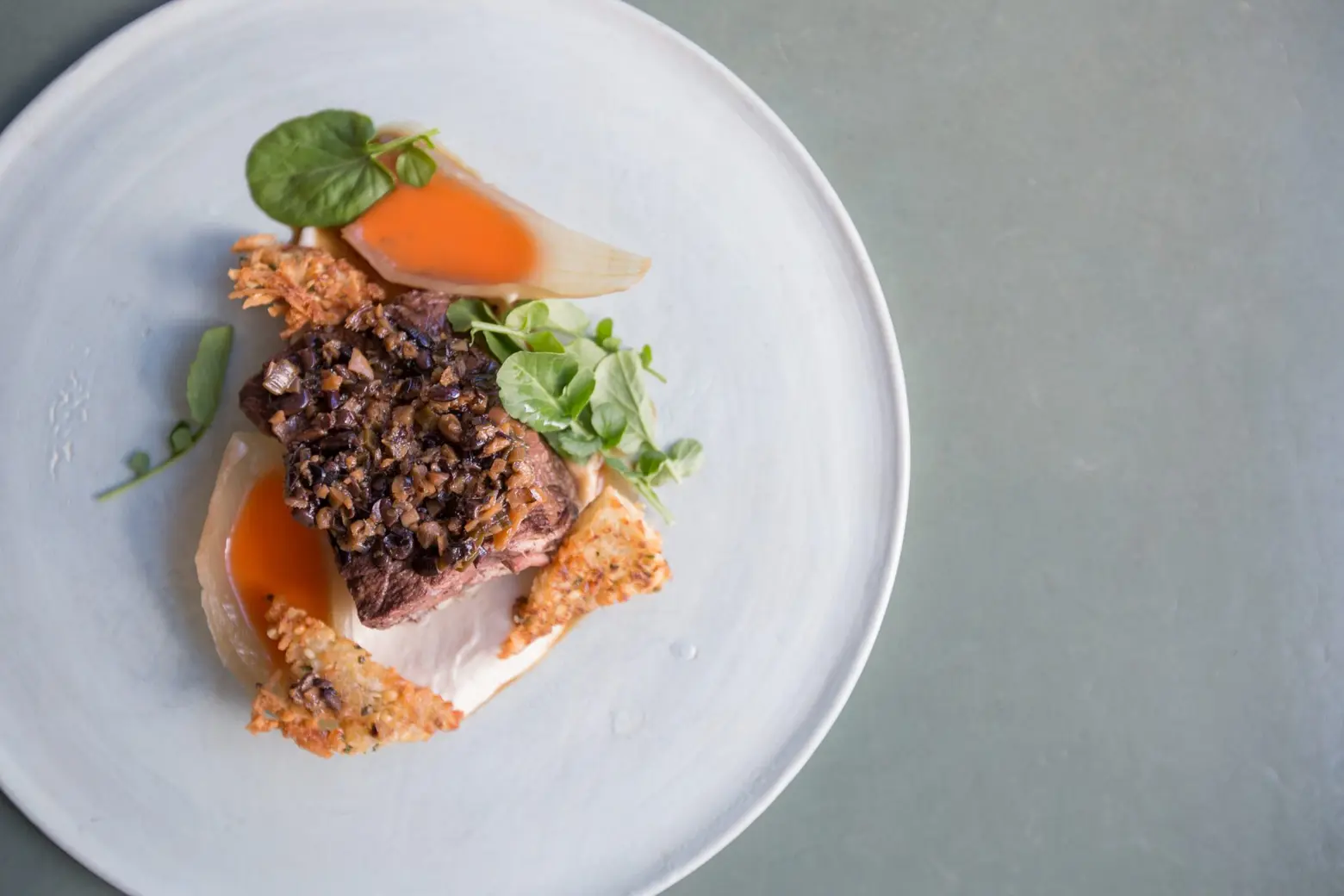 Fermented Black Bean Short Rib. Credit: Kathryn Sheldon
Fermented Black Bean Short Rib. Credit: Kathryn Sheldon
What are some of the key elements of Venezuelan cuisine?
We use a lot of sweet and sour elements. The weather in Venezuela is beautiful all year long, so we have a lot of fresh ingredients. We also have a lot of ceviches, raw shellfish, and fish. So, it’s a very fresh cuisine with a lot of fusion. We have a short rib dish that’s a very traditional dish my grandma used to cook.
Do you shop a lot at the local green markets?
Yes. I try to go as much as possible. I also go to a little Latin market within the Essex Market where I can find rare ingredients from Venezuela like passionfruit and yuca. We also have a farm that provides veggies and fruits for us, and they’re amazing.
When you’re not eating your own cooking, are there other restaurants in the city that you like to go to?
I have so many. I have Hemlock. I love it. It’s a vegetable-forward restaurant, and the chef is so sweet and very, very talented. I think people should go there. Yesterday, I went to Otway, it’s a restaurant in Clinton Hill. It’s so good; it’s very simple, but the flavors are delicious. And it’s a female-led restaurant. I also love Contra and Wildair.
Are there any neighborhoods that you think are coming up now as foodie hubs?
I was living in Williamsburg, but I recently moved to Queens, and I feel like it’s a very upcoming area for restaurants. Astoria and Long Island City have a lot of amazing restaurants and people don’t know about them.
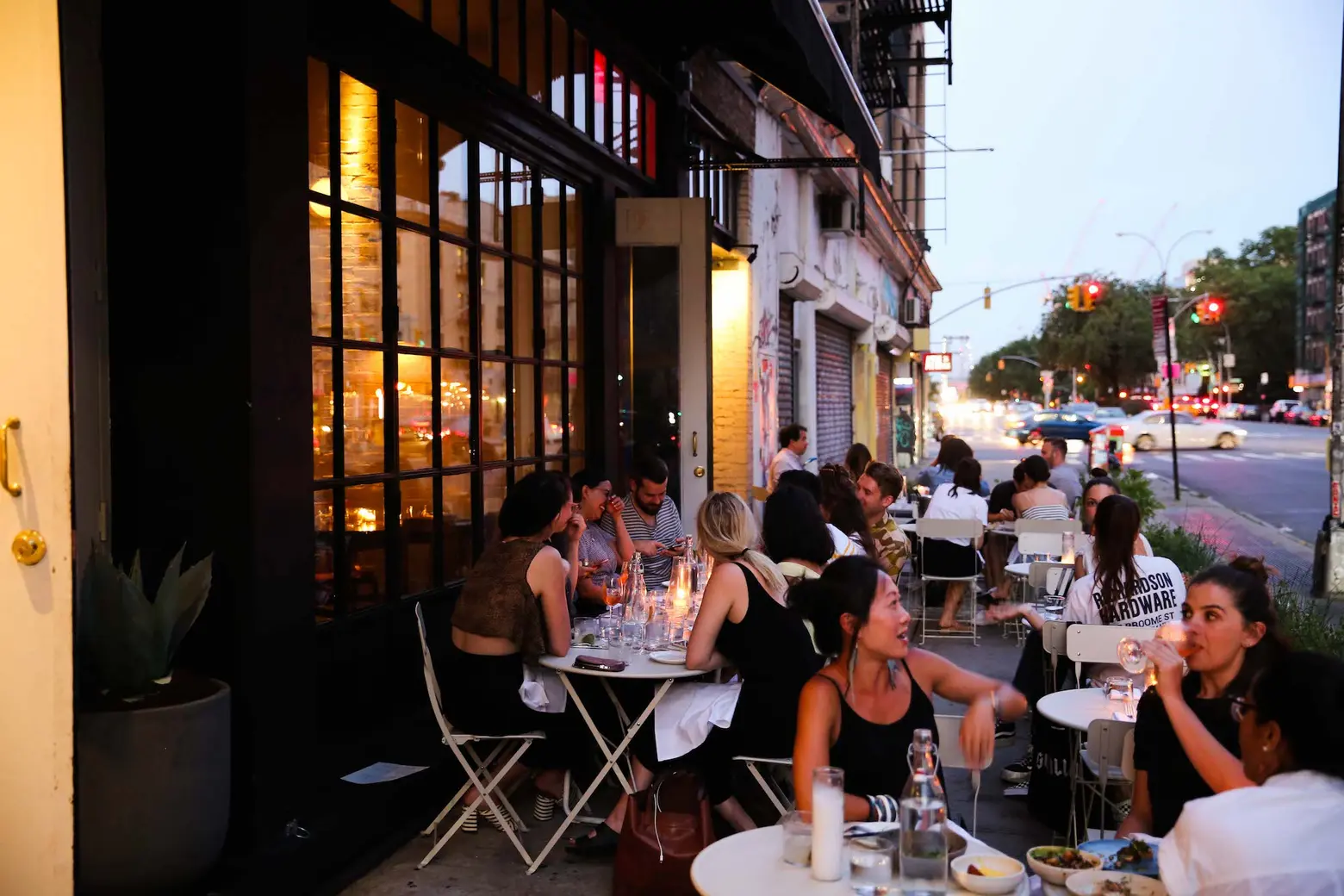
Credit: Katie June Burton
What about De Maria’s home on the Lower East Side, which is a pretty hip, bustling neighborhood with LOTS of bars and restaurants?
It has been a great experience because I always worked in Greenpoint and Williamsburg. It’s a little bit similar, but I feel people are very open here to trying new things. And they’re very appreciative of the presentations of the dishes, so that makes me excited and makes me want to be more detailed and try to find ways that people get even more excited about eating the food.

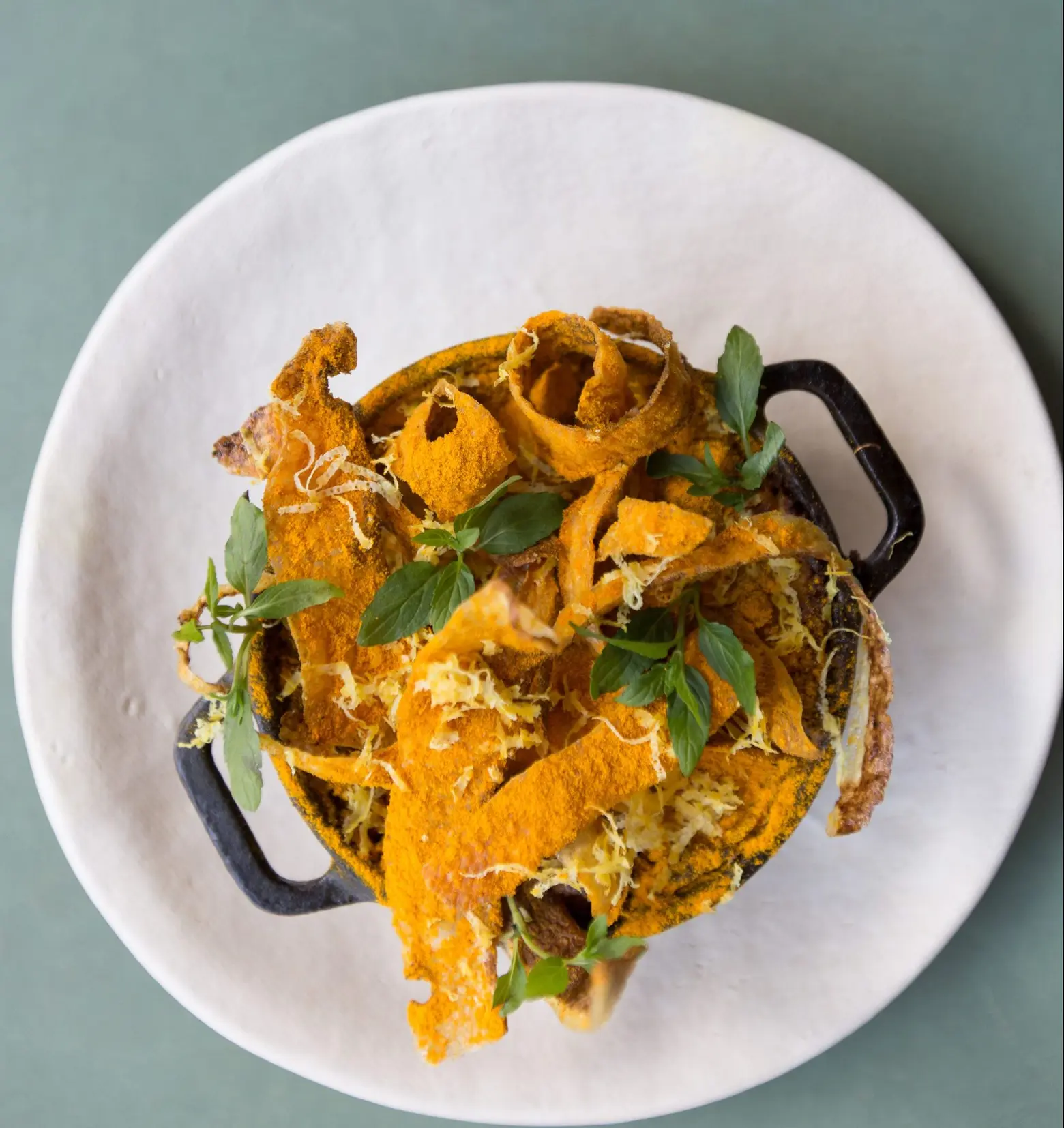 Top: Napa Cabbage and Mango Salad; Bottom: Turmeric Potato Gratin. Credit: Kathryn Sheldon
Top: Napa Cabbage and Mango Salad; Bottom: Turmeric Potato Gratin. Credit: Kathryn Sheldon
Speaking of, do you design your dishes with Instagram in mind?
Since I’ve always worked in fine dining restaurants, I’ve always paid a lot of attention to detail and presentation. I feel like I grew up with that. I don’t do it for Instagram, I do it because I love to do it. And that kind of falls into the restaurant, which is perfect.
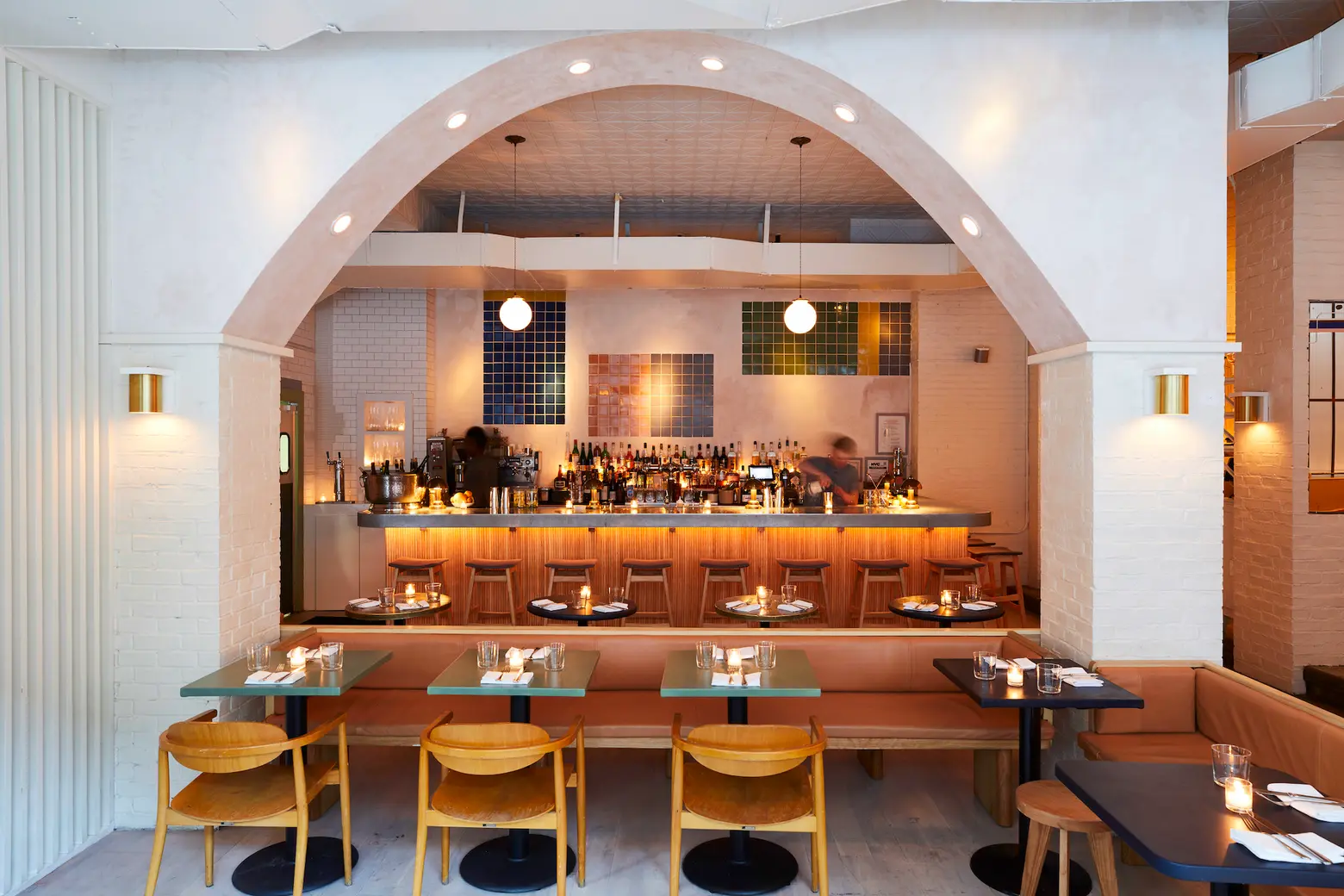
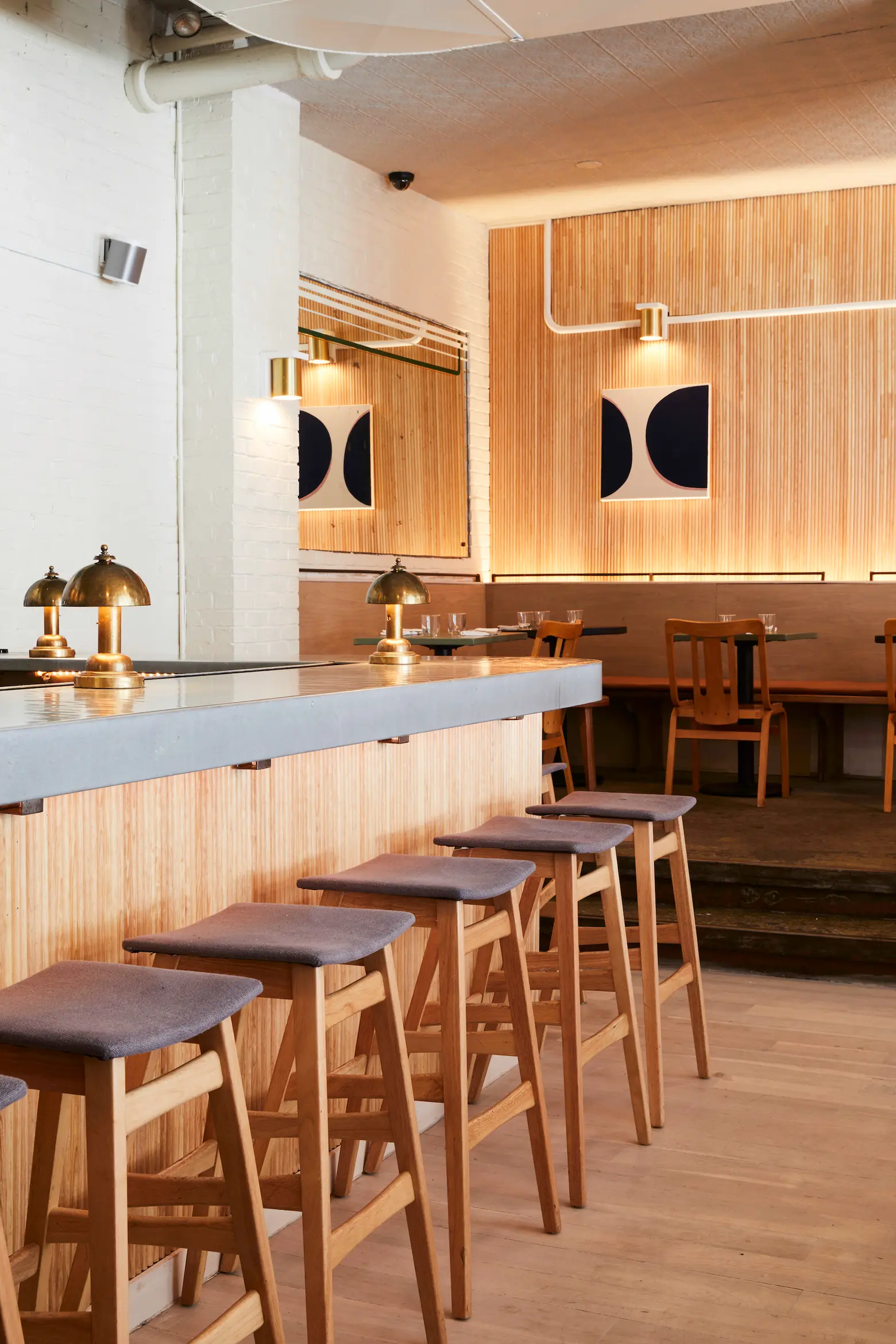
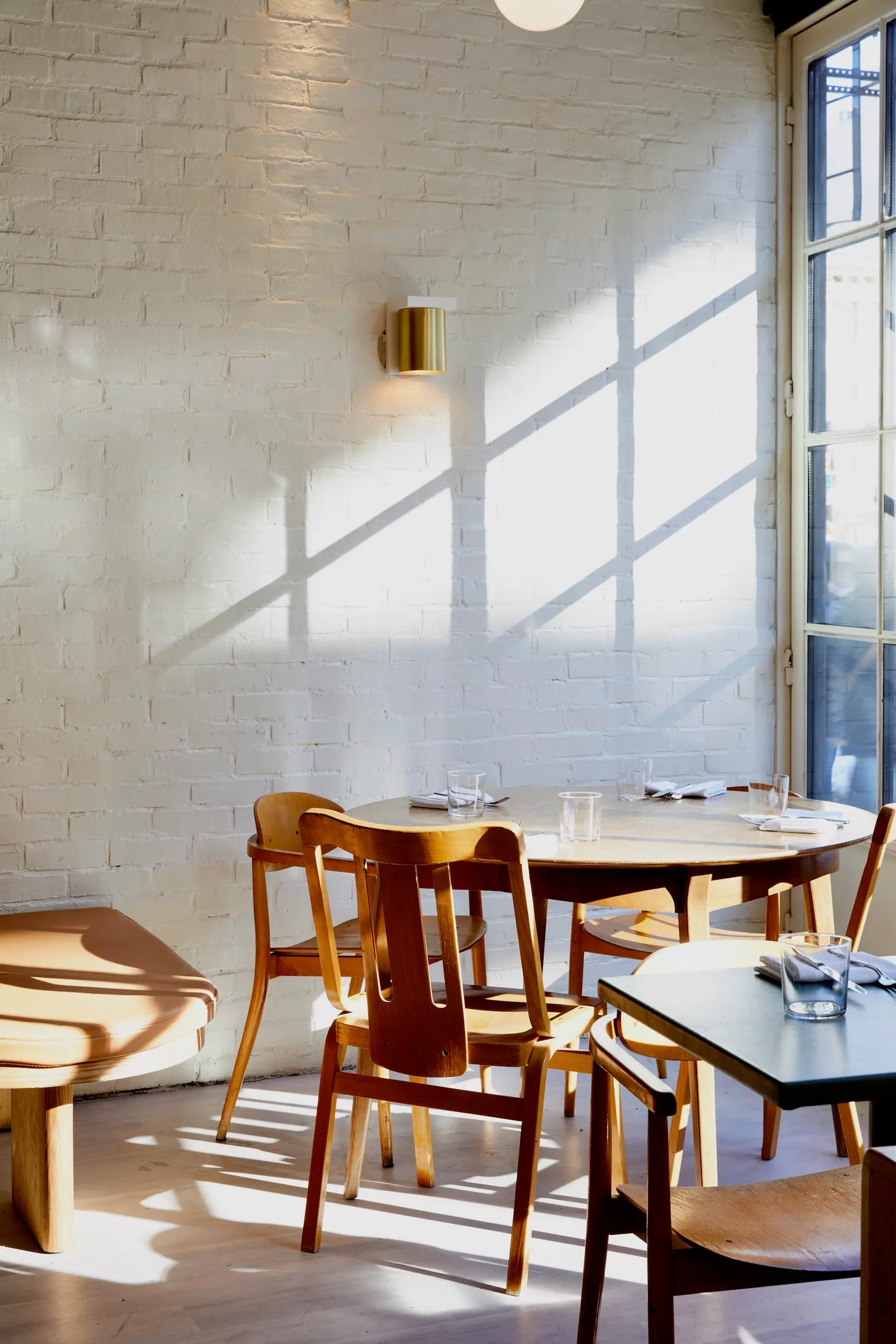 Credit: Nicole Franzen
Credit: Nicole Franzen
What about the incredible interior design of the restaurant–did that influence your presentation at all?
As I mentioned, I grew up in an art world – both of my parents are architects, and my mom is an interior designer, too. So, for me, it is very inspiring to work in a space like this, where it’s so beautiful. I feel it inspired my food to be even better because if the space is this beautiful, the food needs to be even more beautiful.
You mentioned Tepuy, your pop-ups, when we first started chatting. Are you still doing that?
Yes. I did pop-ups for five or six years, and it’s something I love to do because it’s where I can be the most creative with Venezuelan cuisine. So, my plan in the future is to have a guest chef and do collaborations and make more Tepuy dinners, creating a community of women chefs. I’ve heard a lot of my friends telling me, “I want to do pop-ups, but I don’t know where to start.” It’s very scary if you don’t have that community of people helping and guiding you.
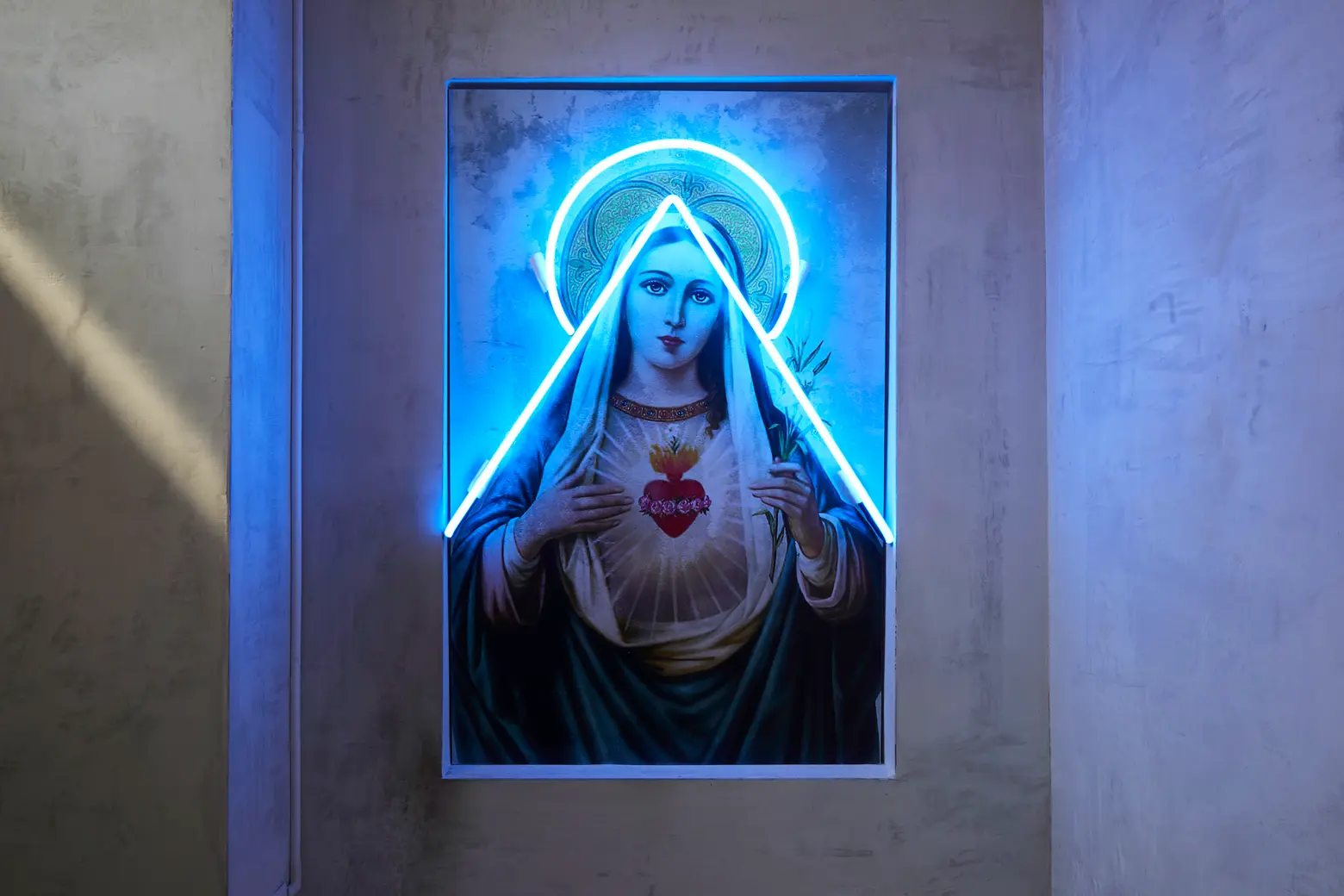 Credit: Nicole Franzen
Credit: Nicole Franzen
Are you involved in any other kind of female focus groups in the city?
I know a bunch of female chefs through Instagram and Facebook, and we support each other in our pictures. If we are looking for a job or anything, we have this group where we connect with each other. My next step is to invite them all to meet here so we can talk about issues and help each other and support each other.
Do you find that there are any kind of restraints for female chefs in the city?
Is it difficult to be a female chef in New York City? One-hundred percent. Every time I see a female cook or a chef, I’m super-excited, and I feel like that’s because it’s harder for us to get a leading position. Instead of being supportive of each other, we get kind of jealous of each other. It’s this kind of competition.
I’ve experienced horrible things in the kitchen. With all men leading kitchens, if you don’t pay attention to them, you’re a nothing. It’s very hard, which is why I want to help through these projects. I want to support other female chefs and inspire them, to tell them that it’s possible. There were so many questions I had when I was first starting, and no one helped me. There’s no secret; everyone can do it.
 Credit: Kathryn Sheldon
Credit: Kathryn Sheldon
Okay, last question. Where do you want to be 10 years from now?
Ten years from now, I really want this career to be less about me and more about helping and inspiring people. I see myself supporting other women, having my own business, and supporting my country. Through my pop-up dinners, I do a lot of charity, and I send a lot of money to help others, so I want to bring people together through food, building awareness about what’s going on in the world and what’s going on in Venezuela. I’ve worked in all these fine dining restaurants, but it’s very superficial. I want to make it less superficial and have a final goal with all this beauty and delicious food. Tricky question!
+++
RELATED:
